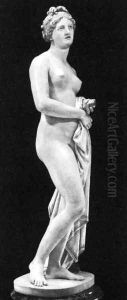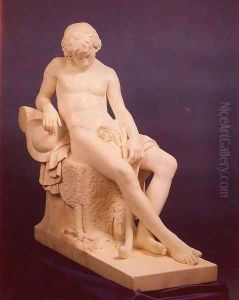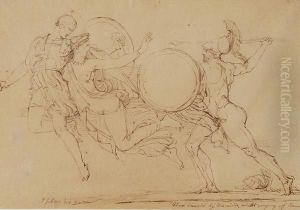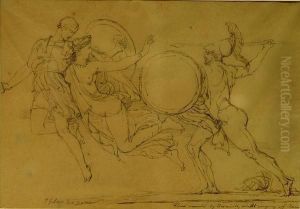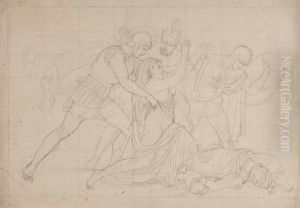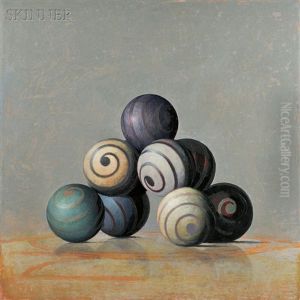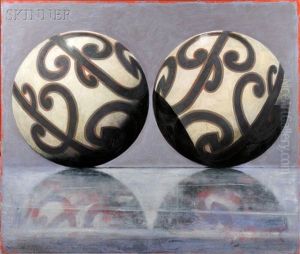John Gibson Paintings
John Gibson was a prominent British neoclassical sculptor of the 19th century. Born on June 19, 1790, in Gyffin near Conwy, Wales, Gibson spent most of his formative years in Liverpool. His father was a market gardener, but after his death, Gibson's mother took her son to Liverpool to live with her brother. It was here that Gibson was apprenticed to a cabinet-maker and wood-carver named Francis, which exposed him to the world of art and craftsmanship.
Gibson's talent was soon recognized by a local collector, who provided him with access to his collection of casts and art books, fueling the young artist's passion for sculpture. In 1817, with the encouragement and financial backing of his patrons, Gibson left for Rome, where he would remain for most of his life. Rome was the center of neoclassical art at the time, and it was here that Gibson came under the tutelage of Antonio Canova, the leading neoclassical sculptor of the day. Canova's influence on Gibson was profound, shaping his style and work ethic.
Gibson quickly established himself as a skilled sculptor in Rome, attracting the attention of the British community there. He became known for his marble sculptures, which often depicted mythological themes and figures in a style that was both idealized and deeply influenced by the classical art of ancient Greece and Rome. Some of his most famous works include 'The Tinted Venus', which he daringly colored to emulate the polychromatic practices of ancient sculpture, and 'Cupid Disguised as a Shepherd Boy'.
Throughout his career, Gibson was an advocate for the use of color in sculpture, which was a controversial stance at the time. He was also a member of numerous artistic societies, including the Royal Academy in London, where he was elected as a full member in 1836. Despite his long residence in Italy, Gibson maintained strong ties to Britain and contributed works to various British institutions.
John Gibson never married and had no children. He was deeply devoted to his art until his death in Rome on January 27, 1866. His works are found in many prestigious collections and continue to be studied and admired for their beauty and adherence to neoclassical ideals.
